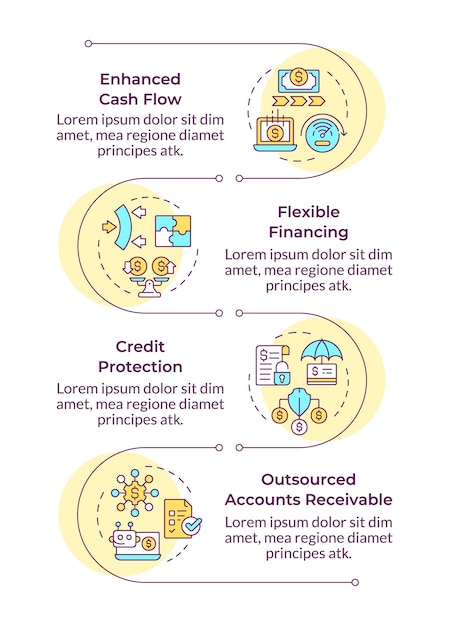Maximize Savings: Understanding the General Business Credit

Understanding the General Business Credit (GBC) is crucial for businesses aiming to reduce their tax liability by combining various eligible tax credits into one, potentially leading to significant savings.
Navigating the complexities of tax credits can be daunting for any business owner. Understanding the General Business Credit: Combining Multiple Tax Credits for Maximum Savings, offers a strategic approach to minimize your tax obligations and boost your bottom line.
Understanding the General Business Credit
The General Business Credit (GBC) is a powerful tool designed to help businesses reduce their tax liability. By combining several individual tax credits into one general credit, businesses can potentially save a significant amount on their taxes. This section will provide a foundational understanding of what the GBC is and why it’s important for businesses to explore.
What is the General Business Credit?
The General Business Credit is a nonrefundable credit, meaning it can reduce your tax liability to $0, but you won’t receive any of it back as a refund if the credit exceeds your tax liability. It is formed by combining various specific business credits into one, providing a more streamlined approach to claiming tax benefits. This consolidation can simplify the tax preparation process and ensure that businesses take full advantage of all available credits.
Why is the GBC Important?
The GBC is important for several reasons. First, it encourages businesses to engage in activities that are deemed beneficial by the government, such as investing in renewable energy or hiring employees from specific groups. Second, it can significantly reduce a company’s tax burden, freeing up capital for reinvestment and growth. Finally, it promotes economic development by incentivizing businesses to undertake projects and initiatives that contribute to the overall economy.

- Simplified Tax Process: Streamlines claiming multiple credits.
- Financial Benefits: Reduces tax liability effectively.
- Incentivizes Growth: Frees up capital for business development.
In summary, the General Business Credit is a valuable resource for businesses looking to reduce their tax burden and support activities that align with governmental goals. Understanding its purpose and mechanics is the first step towards maximizing potential savings.
Identifying Eligible Tax Credits for the GBC
To effectively utilize the General Business Credit, it’s crucial to identify which individual tax credits can be combined to form the GBC. This section will outline some of the most common and significant tax credits that are eligible for inclusion, helping businesses determine their potential GBC eligibility.
Common Eligible Tax Credits
Several tax credits can be combined to form the General Business Credit. Some of the most commonly used include the Work Opportunity Tax Credit (WOTC), the Credit for Increasing Research Activities (Research and Development Credit), and the Renewable Energy Investment Tax Credit. Each of these credits has specific requirements and limitations that must be met to qualify.
Work Opportunity Tax Credit (WOTC)
The Work Opportunity Tax Credit (WOTC) is available to employers who hire individuals from certain target groups who have consistently faced significant barriers to employment. These groups include veterans, individuals receiving Temporary Assistance for Needy Families (TANF), and ex-felons. The amount of the credit can vary depending on the target group and the length of employment, but it can be a substantial benefit for businesses that prioritize hiring from these groups.
Credit for Increasing Research Activities (R&D Credit)
The Credit for Increasing Research Activities, often referred to as the Research and Development (R&D) Credit, is available to companies that invest in qualified research expenses (QREs). This credit is designed to encourage innovation and technological advancement. QREs can include wages paid to research staff, costs of supplies used in research, and contract research expenses. This credit is particularly valuable for companies in industries such as technology, pharmaceuticals, and manufacturing.
- Work Opportunity Tax Credit (WOTC): Hiring individuals from targeted groups.
- Research and Development Credit: Investing in qualified research expenses.
- Renewable Energy Investment Tax Credit: Investing in renewable energy properties.
Identifying and understanding the eligible tax credits is a critical step in maximizing the benefits of the General Business Credit. By carefully assessing their operations and investments, businesses can determine which credits they qualify for and how to combine them effectively.
Calculating the General Business Credit: A Step-by-Step Guide
Calculating the General Business Credit may seem complex, but breaking it down into manageable steps can simplify the process. This section provides a step-by-step guide to help businesses accurately calculate their GBC, ensuring they claim the maximum allowable credit.
Step 1: Determine Eligible Credits
The first step in calculating the GBC is to identify all eligible individual tax credits that your business qualifies for. This involves reviewing your business activities and investments to determine which credits apply. For instance, if you hired qualifying veterans, you would calculate your Work Opportunity Tax Credit (WOTC). If you invested in research and development, you would calculate your R&D Credit. Ensure you have all necessary documentation to support your claims.
Step 2: Calculate Each Credit Separately
Once you have identified the eligible credits, calculate each one separately according to the specific rules and requirements for that credit. This may involve using specific IRS forms or worksheets designed for each credit. For example, to calculate the R&D Credit, you would use Form 6765, Credit for Increasing Research Activities. Accurate calculation of each credit is essential for an accurate GBC.
Step 3: Combine the Credits
After calculating each individual credit, combine them to determine the total General Business Credit. This is done using Form 3800, General Business Credit. On this form, you will list each of the credits you are claiming and their amounts. The form will then guide you through any limitations or adjustments that may apply.

- Identify eligible credits: Determine which individual credits apply.
- Calculate each credit: Use specific IRS forms for accurate values.
- Combine the credits: Use Form 3800 to consolidate and claim the GBC.
Accurately calculating the General Business Credit involves careful attention to detail and adherence to IRS guidelines. By following these steps, businesses can ensure they are claiming the maximum allowable credit and reducing their tax liability effectively.
Navigating the Limitations and Restrictions of the GBC
While the General Business Credit offers significant tax benefits, it is subject to certain limitations and restrictions. Understanding these limitations is crucial for businesses to avoid overclaiming credits and potential penalties. This section will outline the key limitations and restrictions associated with the GBC.
Credit Amount Limitation
The General Business Credit is limited to the amount of your tax liability. Specifically, the credit cannot exceed the excess of your net income tax over the greater of your tentative minimum tax or 25% of your net regular tax liability above $25,000. This means that even if the total of your individual credits exceeds this limit, you can only claim an amount up to the limitation. Any excess credit can be carried back or forward to other tax years, as discussed below.
Carryback and Carryforward Provisions
If your General Business Credit exceeds the amount you can use in a given tax year due to the limitations, you can carry back the excess credit to the preceding tax year and carry it forward to the succeeding 20 tax years. This allows businesses to utilize the full value of the credit over time, even if they cannot use it all in the year it was generated. Properly documenting and tracking these carrybacks and carryforwards is essential for accurate tax reporting.
Specific Credit Limitations
In addition to the overall limitations on the General Business Credit, some individual credits may have their own specific limitations. For example, the R&D Credit may be subject to limitations based on the company’s gross receipts. Understanding these individual limitations is crucial for accurately calculating and claiming the GBC.
Navigating the limitations and restrictions of the General Business Credit requires careful attention to detail and a thorough understanding of IRS regulations. By being aware of these limitations, businesses can avoid errors and maximize the benefits of the GBC over time.
Strategies for Maximizing Your General Business Credit
To fully leverage the benefits of the General Business Credit, businesses should adopt strategic approaches to identify, calculate, and claim eligible credits. This section provides actionable strategies for maximizing your GBC and ensuring you receive the maximum allowable tax savings.
Maintain Accurate Records
Accurate record-keeping is essential for maximizing your General Business Credit. Keep detailed records of all activities and expenses that qualify for individual credits. This includes documentation related to hiring practices for the WOTC, research and development expenses, and investments in renewable energy. These records will not only support your credit claims but also make it easier to identify potential credits during tax preparation.
Stay Updated on Tax Law Changes
Tax laws and regulations are constantly evolving, and changes can impact the eligibility and calculation of the General Business Credit. Stay informed about the latest tax law changes by subscribing to IRS updates, consulting with tax professionals, and utilizing tax preparation software that incorporates current regulations. Being proactive about staying informed can help you identify new credit opportunities and avoid errors in your GBC calculations.
Conduct Regular Internal Audits
Regular internal audits can help you identify overlooked credit opportunities and ensure that you are accurately calculating and claiming the General Business Credit. Review your business activities, investments, and expenses on a regular basis to identify potential areas for credit maximization. Consider engaging a qualified tax professional to conduct these audits and provide expert insights.
- Maintain Accurate Records: Keep detailed records of all eligible activities and expenses.
- Stay Updated on Tax Law Changes: Subscribe to IRS updates and consult tax professionals.
- Conduct Regular Internal Audits: Identify overlooked credit opportunities and ensure accuracy.
By implementing these strategies, businesses can maximize their General Business Credit and achieve significant tax savings. Proactive management and attention to detail are key to unlocking the full potential of this valuable tax benefit.
Real-World Examples and Case Studies
To illustrate the practical application and benefits of the General Business Credit, this section will explore real-world examples and case studies of businesses that have successfully utilized the GBC to reduce their tax liabilities.
Example 1: Manufacturing Company
A manufacturing company invested heavily in research and development to improve its product line. By claiming the R&D Credit and combining it with other eligible credits, the company was able to significantly reduce its tax liability. This allowed the company to reinvest the saved funds back into its research and development efforts, driving further innovation and growth.
Example 2: Renewable Energy Company
A renewable energy company invested in new solar energy projects. By claiming the Renewable Energy Investment Tax Credit and combining it with other credits, the company was able to offset a considerable portion of its tax obligations. This tax benefit made the renewable project very profitable and allowed this company to re-invest in additional renewable energy endeavors.
Example 3: Small Business Hiring Veterans
A small business made a concerted effort to hire veterans, taking advantage of the Work Opportunity Tax Credit (WOTC). The business owner learned that veterans fell within a specified target group, making them eligible for the WOTC. By combining the WOTC with other available credits, the small business owner saved over $20,000 in overall tax liability.
These real-world examples demonstrate the potential impact of the General Business Credit on businesses across various industries. By understanding how other companies have successfully utilized the GBC, businesses can gain valuable insights and strategies for maximizing their own tax savings.
| Key Point | Brief Description |
|---|---|
| 💰 General Business Credit | Combines multiple tax credits for tax savings. |
| 🌱 Eligible Credits | Includes WOTC, R&D, and Renewable Energy credits. |
| 📝 Calculation Process | Identify credits, calculate each, and combine using Form 3800. |
| ⚖️ Limitations | Credit is limited to your tax liability; excess can be carried back or forward. |
General Business Credit FAQs
▼
The primary purpose is to provide a consolidated way for businesses to reduce their tax liability by combining multiple eligible tax credits into one general credit.
▼
Common credits include the Work Opportunity Tax Credit (WOTC), the Research and Development (R&D) Credit, and the Renewable Energy Investment Tax Credit, among others.
▼
IRS Form 3800, titled “General Business Credit,” is used to calculate and claim the combined credit amount on your federal tax return.
▼
If your GBC exceeds your tax liability, the excess credit can be carried back one year and carried forward up to 20 years to offset future tax liabilities.
▼
Maintain accurate records, stay updated on tax law changes, conduct regular internal audits, and consult with tax professionals to ensure all eligible credits are claimed.
Conclusion
Understanding and strategically utilizing the General Business Credit can provide significant tax savings for businesses. By identifying eligible credits, accurately calculating the GBC, and navigating its limitations, businesses can maximize their tax benefits and free up capital for growth and investment.





